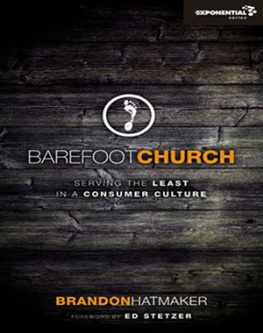Copyright 2003 by Chet Raymo
All rights reserved. No part of this book may be reproduced or transmitted in any form or by any means, electronic or mechanical, including photocopying, recording, or by any information storage and retrieval system, without permission in writing from the Publisher.
First published in the United States of America in 2003 by
Walker Publishing Company, Inc.
First paperback edition published in 2004.
Published simultaneously in Canada by Fitzhenry and Whiteside, Markham, Ontario L3R 4T8
For information about permission to reproduce selections from
this book, write to Permissions, Walker & Company,
104 Fifth Avenue, New York, New York 10011
Library of Congress Cataloging-in-Publication Data
available upon request
eISBN: 978-0-802-71921-8
BOOK DESIGN BY KATY RIEGEL
ENDPAPER MAP AND ILLUSTRATIONS BY MARTIE HOLMER
Visit Walker & Company's Web site at www.walkerbooks.com
Printed in the United States of America
2 4 6 8 10 9 7 5 3
I thank family members, friends, and students who have shared the path with me over the years. Hazel L. Varella, a longtime acquaintance and Easton historian, was of inestimable help, especially as author, with Elise Ames Parker, of Growing Up at SheepPasture (Easton Historical Society, 1976). Hazel read an early draft of the manuscript and made important suggestions and corrections. Edmund Hands, another Easton historian, supplied me with valuable information, including census data for Jenny Lind Street. Michael Dosch at the Frederick Law Olm-sted Archives in Brookline, Massachusetts, made it possible for me to examine relevant drawings of Olmsted's firm. Greg Galer, archivist of the Tofias Industrial Archives at Stonehill College, was generous with his time and knowledge. Paul Berry, curator of the Easton Historical Society, made available historical photographs.
Books that were especially valuable to me include: Edmund Hands, Easton's Neighborhoods (Easton Historical Society, 1995); William L. Chaffin (1837-1923), History of Easton, Massachusetts (1886); Margaret McEntee, Edmund Hands, Jeffrey Nys-trom, Duncan Oliver, Hazel Varella, and Robert Brown, History of Easton, volume 2 (Easton Historical Society, 1975); Peter J. Schmitt, Back to Nature:The Arcadian Myth in Urban America (Oxford, 1969); Norman T. Newton, Design on the Land: The Developmentof Landscape Architecture (Belknap Press of Harvard University Press, 1971); and Rebecca Sol-nit, Wanderlust: A History of Walking (Penguin, 2000).
Jackie Johnson, my editor at Walker & Company, walked the path and polished the book; I am privileged to enjoy her talent and friendship. George Gibson, my publisher at Walker, continues to believe in me. Thanks go to all the fine people at Walker and to my agent, John Williams. The Lannan Foundation provided support. My wife, Maureen, gave the manuscript her usual careful reading. And finally, thanks to the directors and staff of the Natural Resources Trust of Easton for preserving and maintaining the path and its environs for the enjoyment of walkers.
THE PATH
FOR THIRTY-SEVEN YEARS I have walked the same path back and forth each day from my home in the village of North Easton, Massachusetts, to my place of work, Stonehill College. The path takes me along a street of century-old houses, through woods and fields, across a stream, along a water meadow, and through an old orchard and community gardens. Much of the landscape of the path was designed by the famous American landscape architect Frederick Law Olmsted as an estate called Sheep Pasture for a great-grandson of Oliver Ames, the man who established in 1803 the shovel manufactory whose history is so intimately linked to the village. I have walked the path so many times, I believe I could do it blindfolded; certainly, I have done it on the darkest nights.
If it is possible to know a landscape well, I know this one. I can anticipate the exact day in late February when I will hear the first red-winged blackbirds taking up territories along the brook. I know to the hour when the spring peepers in the water meadow will begin their song, and when the wood anemones will open their five-petaled blossoms beside the shaded path. I know day by day the moments of sunrise and sunset, when the new moon will grace the western sky with its eyelash crescent, and when Orion will rise in the east. After thirty-seven years this knowledge is in my bones, put there by long experience, by close observation, by love. At the same time I know that it is not possible to know any landscape exhaustively For all of its familiarity, there has never been a day I have walked the path without seeing something noteworthy. There are some things I have seen only once in all those years: a single blossom of wild columbine, a kingfisher by the stream, a dog stinkhorn mushroom.
Every pebble and wildflower has a story to tell. The flake of granite in the path was once at the core of towering mountains pushed up across New England when continents collided. The purple loosestrife beside the stream emigrated from Europe in the 1800s as a garden ornamental, then went wantonly native in a land of wild frontiers. The light from the star Arcturus I see reflected in the brook beneath the bridge at night has been traveling across space for forty years before entering my eye. I have attended to all of these stories and tried to hear what the landscape has to say. Binoculars and magnifier helped: binoculars for the red-tailed hawk at the top of the distant pine, magnifier to inspect the clever sexual partsmale paint brush and female sticky padof the cardinal flower.














